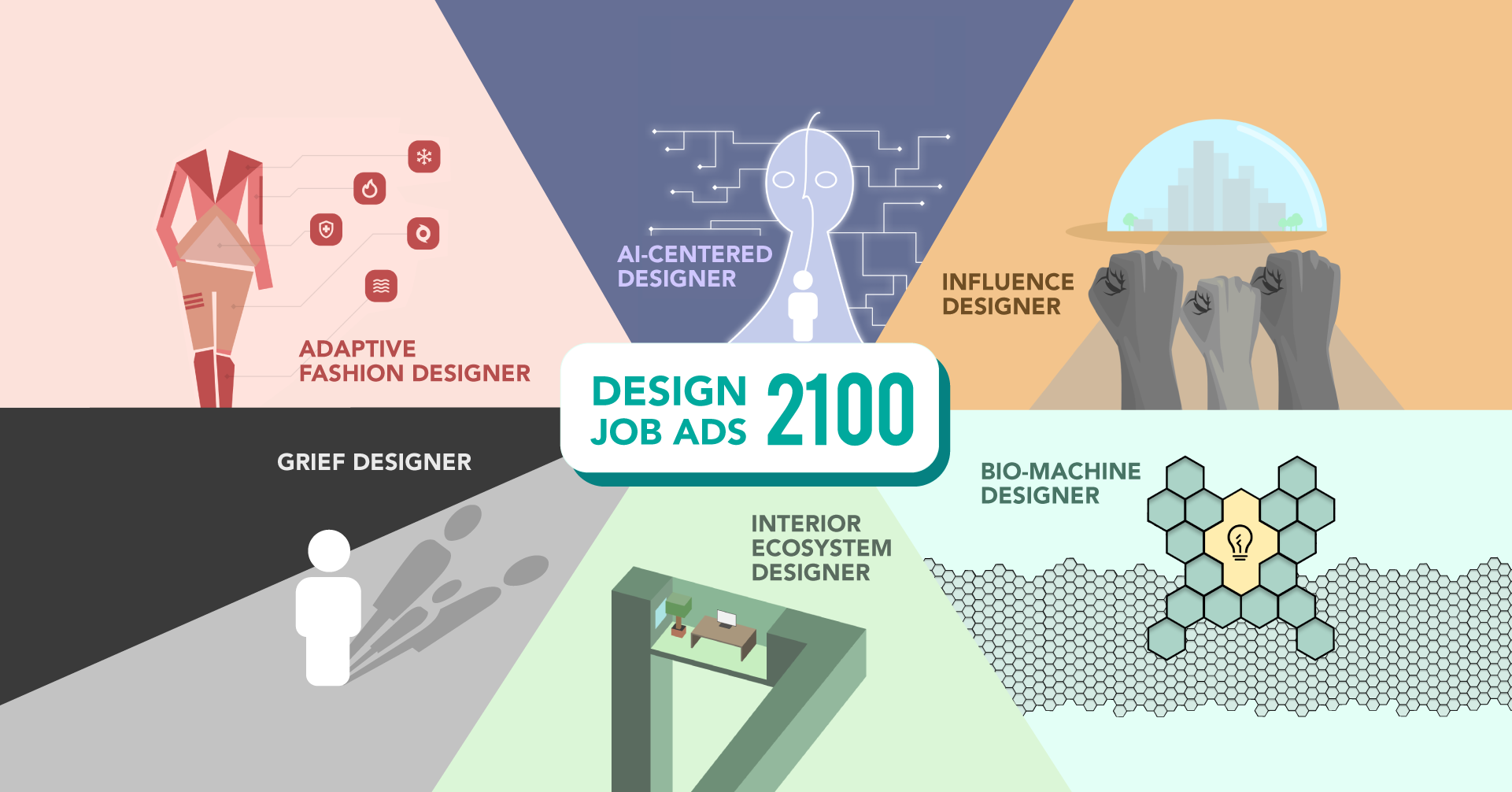Design Job Ads From 2100
This article is inspired by findings from a participatory futures chat bot Studio Dojo launched in March 2022. A deeper analysis of the chat bot’s findings are still ongoing and a more comprehensive story about it will be shared at a later date. Follow Studio Dojo on LinkedIn, Instagram or Facebook to be updated when that story is published!
When you imagine the future of your work, do you imagine something more positive or negative? Is there growth or collapse? Transformation or status quo? What do you observe today that informs you of the future you imagine?
Between 1 and 31 March this year, I got to bring almost 300 participants through these questions when I helped Studio Dojo launch a participatory futures chat bot.
Created as an experiment to collect what people might think about the future of their work, the chat bot attracted participants from a variety of industries ranging from design to healthcare, education, finance, government and more.
Amid this diversity, I was surprised by the three most commonly cited trends that participants used to imagine the future of their work;
- Climate Change,
- Artificial Intelligence,
- and Polarised Societies.
It was fascinating to me how similar these three trends were to Leah Zaidi’s thoughts on “the only three trends that matter”. In her article, Zaidi suggested that these three trends could serve as basic criteria for “future-proofing” our organisations, teams or even personal lives.
It led me to wonder how might I imagine the future of my work if I also took into account these three trends that so many others are seeing.
In this article, I generated three scenarios and came up with six job advertisements to visualise what the design industry might look like in those futures.
Scenario A: Coping By Tearing Apart
In the year 2100, climate change is humanity’s biggest problem. Its effects are devastating, wreaking havoc indiscriminately and exacerbating other critical issues like poverty, leading to ever polarised societies. Society’s inability to integrate and collaborate severely impacted our attempts to address climate change. What we could do to try to mitigate and adapt to changes in the environment is too little, too late.
In order to survive, humanity has come to rely heavily on artificial intelligence to take on the nearly impossible task of predicting the effects of climate change. Cities are now designed by AI to be resilient to extreme and erratic weather. Global food production methods becomes reliant on AI-enabled equipment and infrastructure. Over time, the survival and safety of humanity as a species becomes completely reliant on AI that has grown so complex, nobody on Earth truly understands its algorithms and how it works.
This reliance on AI has caused a greater divide between the rich and poor. Well developed countries with the resources and infrastructure needed for AI fare better in a world ravaged by climate change, while lesser developed countries struggle daily. Polarisation of society widens and becomes so deeply entrenched that extreme ideologies arise and become popular. This is incredibly dangerous especially among the rich of the world, who hold most of the power and resources of the world because they hold more control over AI.
The poor of the world grow frustrated and demand equality. Protests erupt all around the world, and in poorer countries, civil war becomes the norm. The rich eventually resorts to using AI to protect themselves. The same AI algorithms used to safeguard humanity against the effects of climate change are now utilised to protect the rich from the poor.
Extreme ideologies take root, such as the belief that the greater good is for the survival of the “best” of humanity, the rich and powerful, the scientists, business owners and leaders of the world. People become desensitised to large scale tragedies caused by climate change. Those who can afford it continue to focus on their own survival and leave the rest to fend for themselves, believing this to be the greater good.
Job 1: AI-Centered Designer
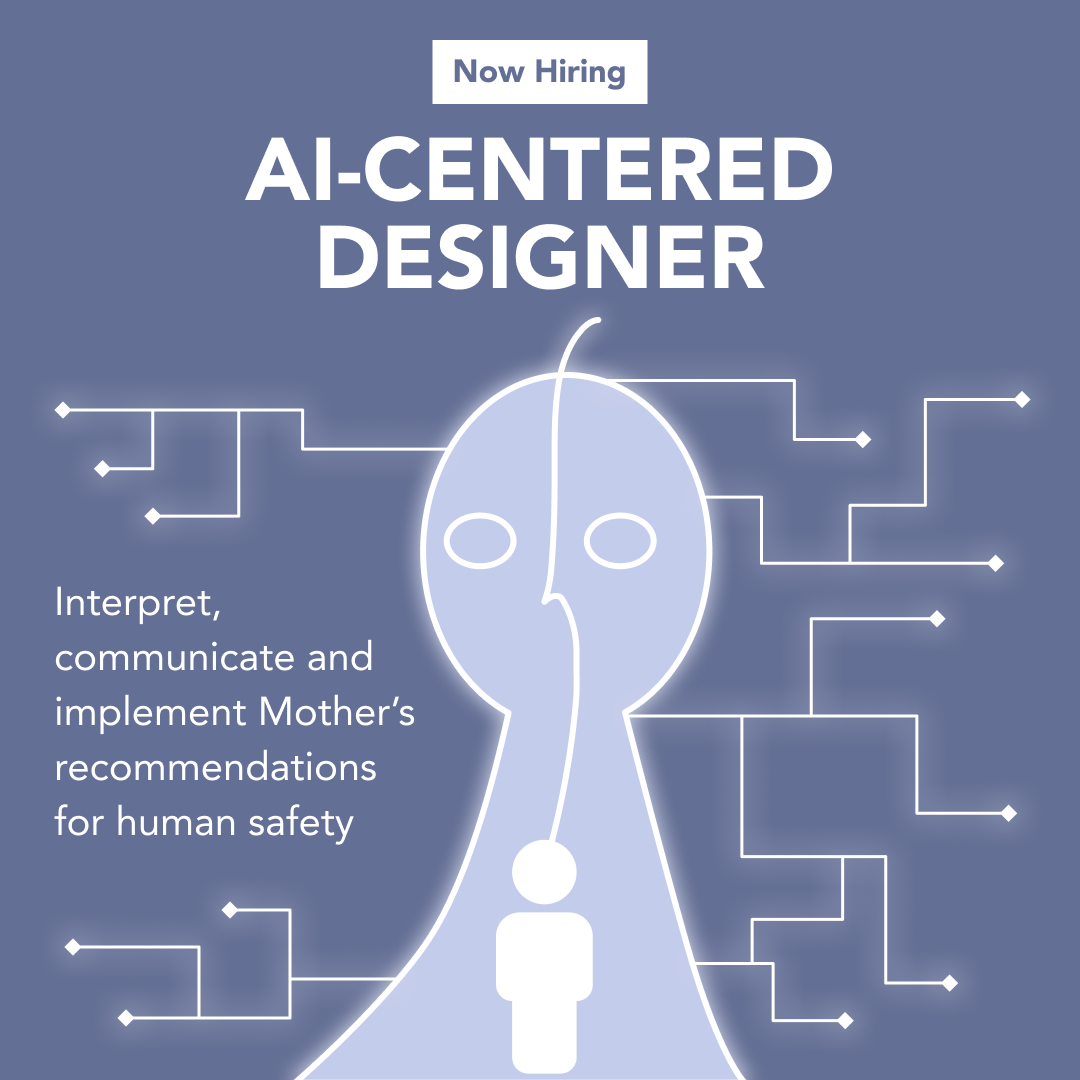
About the Job
Mother is the world’s most advanced artificial intelligence in charge of human safety. She calculates and predicts climate change, natural disasters, population control measures and food and water needs. The AI-Centered designer is expected to work within a multi-disciplinary team of scientists and engineers to interpret Mother’s algorithms and recommendations. The designer plays a crucial role in condensing complex information from Mother into easily approachable and understandable artefacts, in order to facilitate the timely and effective implementation of Mother’s recommendations.
Responsibilities
- Work with Data, Research, Meteorology, Environment, and Predictions teams to interpret and analyse Mother’s predictions and recommendations.
- Use information visualisation techniques to trace logic and data paths to help scientists understand Mother.
- Conceptualise innovative ways to effectively communicate Mother’s weather, food, water and population predictions.
- Conceptualise innovative ways to implement, execute and enforce Mother’s recommendations for citizens.
- Embrace and advocate for AI-centered principles such as staying true to the data and trust in the algorithm.
Job 2: Influence Artist
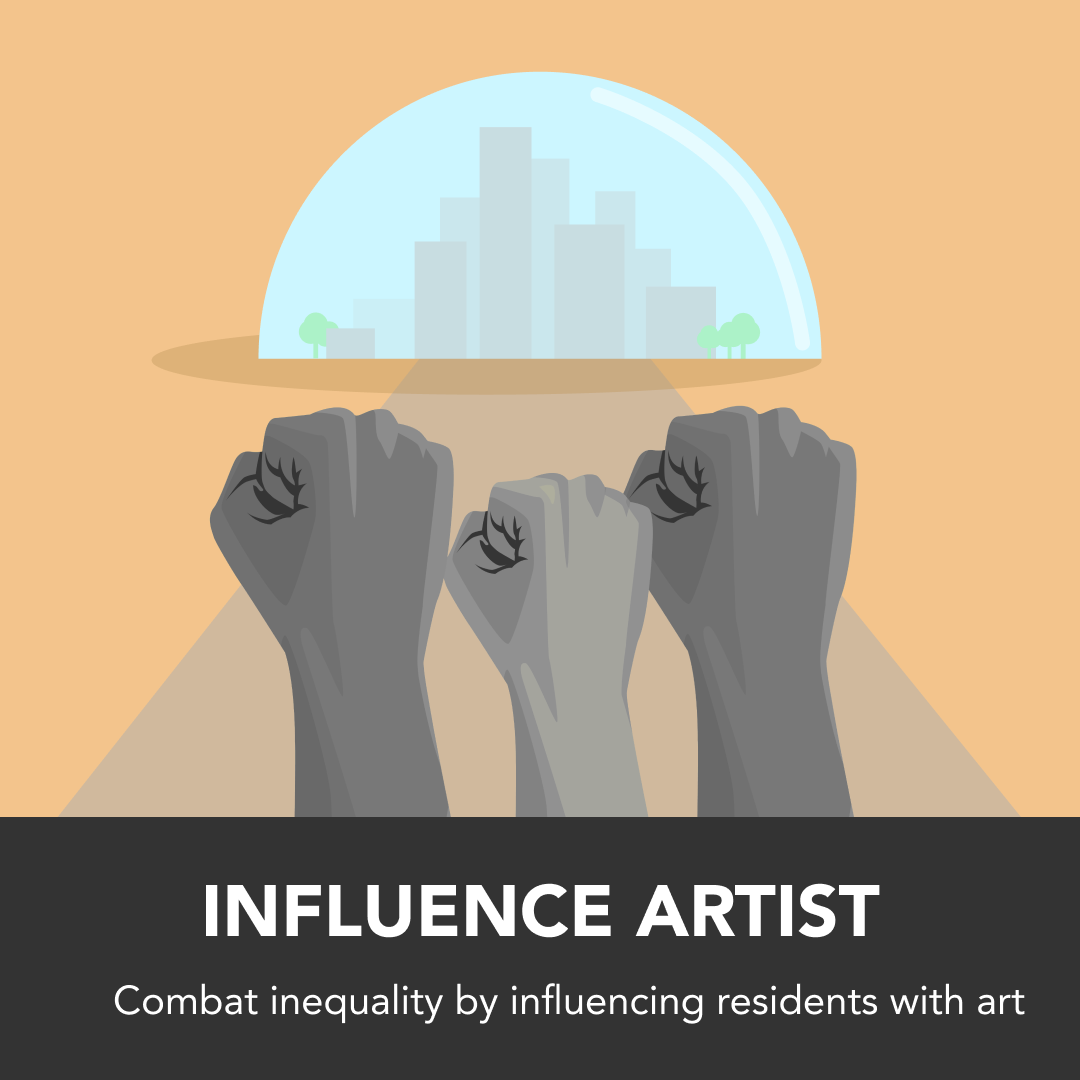
About the Job
Calling artists of all mediums and forms, join our collective of psychologists, AI experts, craftsmen, engineers, fabricators, sculptors and designers in our fight against inequality. Gated communities have deprived us of food, water, electricity, healthcare, and other basic necessities for too long. Work with our team to create and spread art through the social networks of gated communities in order to seed ideas, influence mindsets, and shift behaviours. Help us grow the number of sympathisers among gated communities and call them to action, to stage protests from within their walls and to smuggle supplies out of gated cities to the rest of us.
Responsibilities
- Be an expert in your craft, whether it be still or moving images, virtual reality, physical materials, computer code, or other mediums.
- Work closely with our team of AI experts and psychologists to conceptualise art to influence gated community residents.
- Partner other artists to create cross-medium experiences to deepen our influence.
- Understand popular rhetorics used in gated communities and how we can use or undermine them for our cause.
Scenario B: Integrating Nature and Technology
In the year 2100, humans have successfully mitigated the effects of climate change and kept global warming within an acceptable limit. This successful mitigation is thanks to the help of AI in the discovery of new types of smart, sustainable materials, which can be connected to one another and to a central computer.
These new types of materials are organic with the ability to maintain, grow and strengthen itself over time, much like living creatures. Wired inherently in these new materials are also the ability to transmit energy and information to each other.
Because of such benefits, these new materials are now used in nearly all types of human creation. Buildings, roads, machines, robots, appliances, clothes, and all sorts of other human invention are now built either completely or with some mix of these organic materials.
Anything created or augmented with bio-materials now becomes its own computer, capable of being programmed to serve its intended purpose, as well as to connect with other bio-machines. AI becomes ubiquitous, being used to monitor and maintain all bio-machines and structures. Networks upon networks of these new bio-machines are all connected to AI which helps to monitor and regulate energy use by these machines at national levels.
This shapes human society to live in radical new ways. An average human now typically lives in structures similar to trees, which grow and strengthen over time. They feature an internal system for absorbing and filtering water from the ground, as well as the ability to harness sunlight for energy. These structures are plugged into a central computer for monitoring and control to ensure each structure is its own self-sustaining ecosystem. Material growth rates are adjusted when needed, changes in water quality is maintained, and energy use is monitored.
With the lived sense of being interdependent with each other as well as nature, humanity is more inclined toward peaceful ways to deal with conflict and disagreement. From individuals to families, to neighbours, to local communities, towns, cities, whole nations and beyond. Each level of human systems grow more empathetic because there is an innate understanding that the health of a single individual can affect the health of the overall system.
Job 3: Bio-Machine Designer
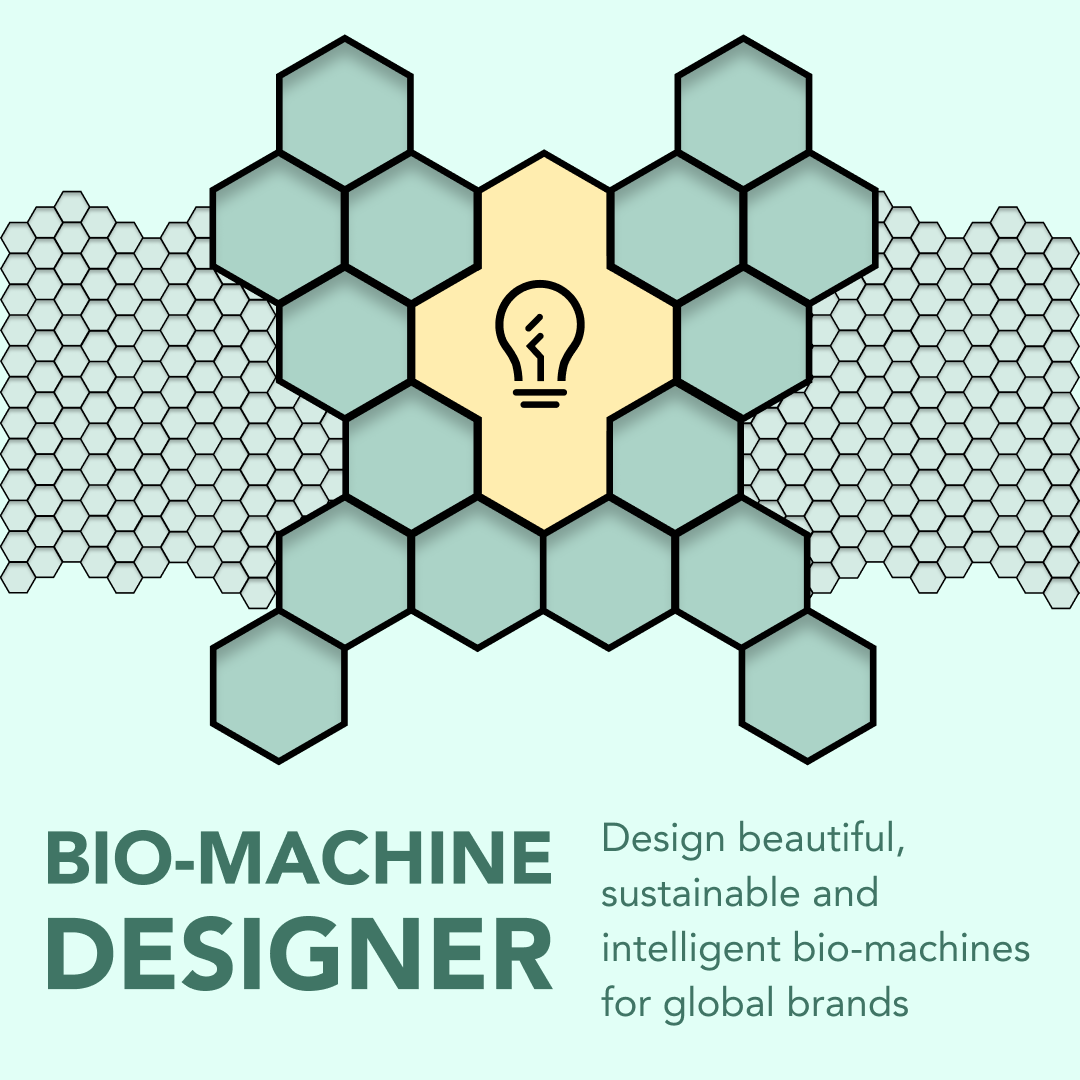
About the Job
As an international design agency, we inject sustainability and intelligence into products through bio-machine technology. We help global brands and manufacturers craft beautiful products that not only strengthen over time, but are also capable of being connected into central AI networks to gain smart capabilities. We are on the lookout for a bio-machine designer who has an intimate understanding of systems thinking to join us in generating beautiful, sustainable and intelligent products and their ecosystems.
Responsibilities
- Conceptualise bio-machine designs that are user-friendly, self-sustaining, and intelligent.
- Design rules and guidelines for how bio-machines interact with each other.
- Map connections between bio-machines and existing networks.
- Produce schematic maps to visualise bio-machine ecosystems.
- Work in a team to prototype and test bio-machine design concepts for their efficiency at being self-sustaining.
Job 4: Interior Ecosystem Designer
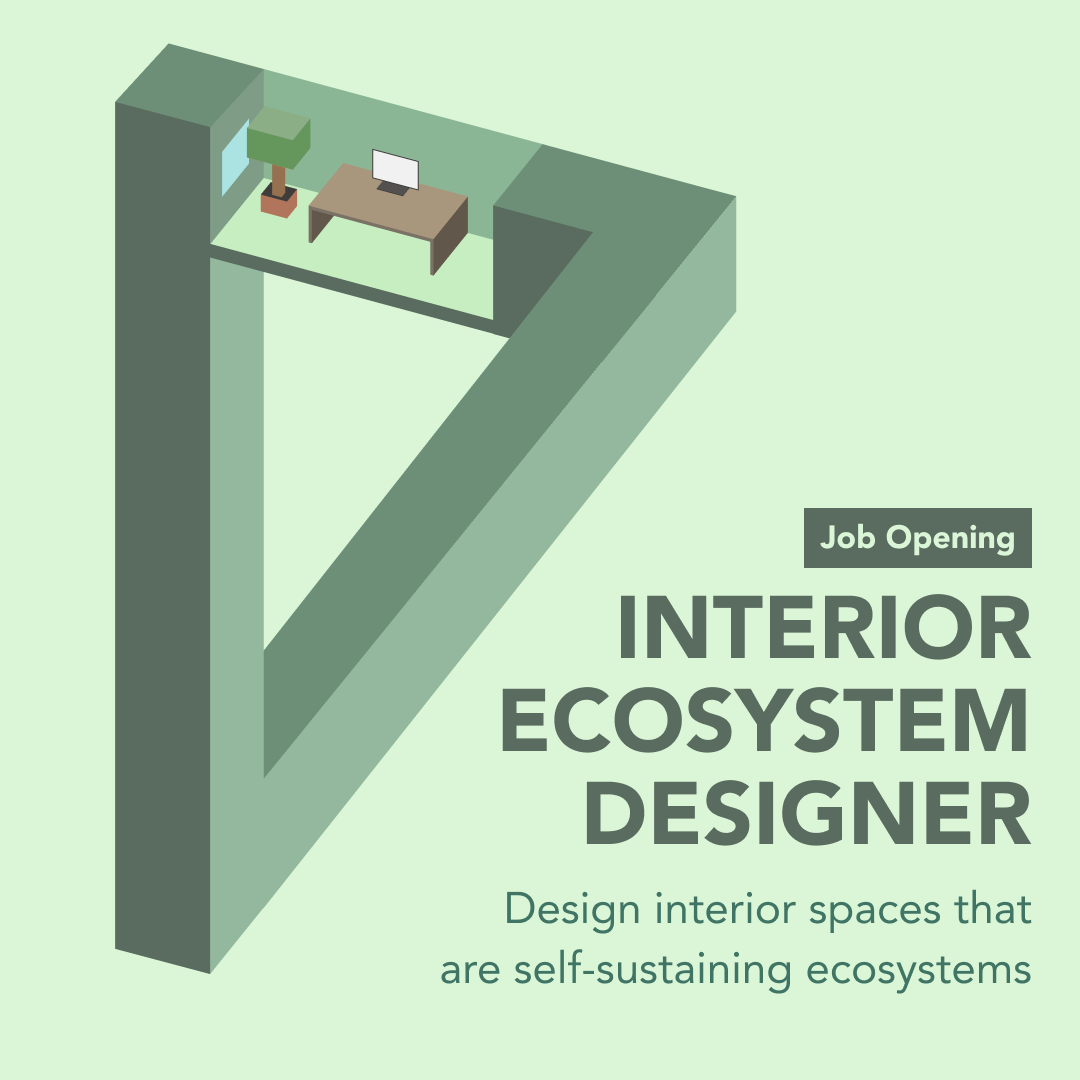
About the Job
We are an award-winning international Interior Design and Build firm. We are looking for an Interior Ecosystem Designer to join us in creating interior spaces that are comfortable, functional, and self-sustaining. A successful designer with us will not only be able to style an interior, but also have an understanding of how different parts of a space serve their own functions, yet interconnect as one ecosystem. This designer should be comfortable to work on both residential and commercial projects, and have good communication skills to work with specialists during the construction of interior ecosystem projects.
Responsibilities
- Conceptualise designs of living interior spaces that integrate the health of its occupants into a self-sustaining ecosystem.
- Systematically design the integration of each part of an interior space, ensuring that it will grow into a sustainable space over time.
- Design systems diagrams alongside AI to run simulations and tests on the viability of sustainable interior designs.
- Work with plumbing, electrical, and AI specialists to oversee the set up of an interior ecosystem during the construction of a project.
Scenario C: Overwhelmed But United
In the year 2100, the effects of climate change have shown up unpredictably fast, catching humanity unprepared. Natural disasters happen so frequently that daily life never finds any consistency.
Countries around the world struggle to manage the effects of climate change. Heat waves, deep freezes, hurricanes, earthquakes, volcanic eruptions, tsunamis, droughts, wildfires, floods, and other extreme weather events batter society into a weakened state. The planet’s biodiversity is severely affected, food systems become unreliable, and the global economy has collapsed.
With a majority of society living in a constant state of emergency and the economy in shambles, there is a lack of resources to continue research and development of technology like artificial intelligence. Development of AI slows down significantly, not making enough progress for any meaningful application of the technology to be discovered.
Humanity struggles to dedicate resources to both immediate relief and rescue efforts, as well as long term planning to mitigate and adapt to such changes in the environment. This contributes to an extended period of life in a state of emergency.
In such difficult situations, it is the leaders who are more empathetic and caring who find success in helping their countries navigate life. Empathetic leaders are the ones with the capacity to help their countries efficiently prepare for disasters. Global politics see a major shift toward more just, caring, empathetic, democratic leaders. Nations who were once rivals begin to look past existing disputes so that they can rely on one another for humanitarian aid. This common struggle for survival across different countries, races, genders, religions and income levels, leads to a more equal, just and democratic society.
While tragedy is commonplace and humanity struggles to respond effectively, society manages to find a way to unite and live more peacefully with one another.
Job 5: Grief Designer
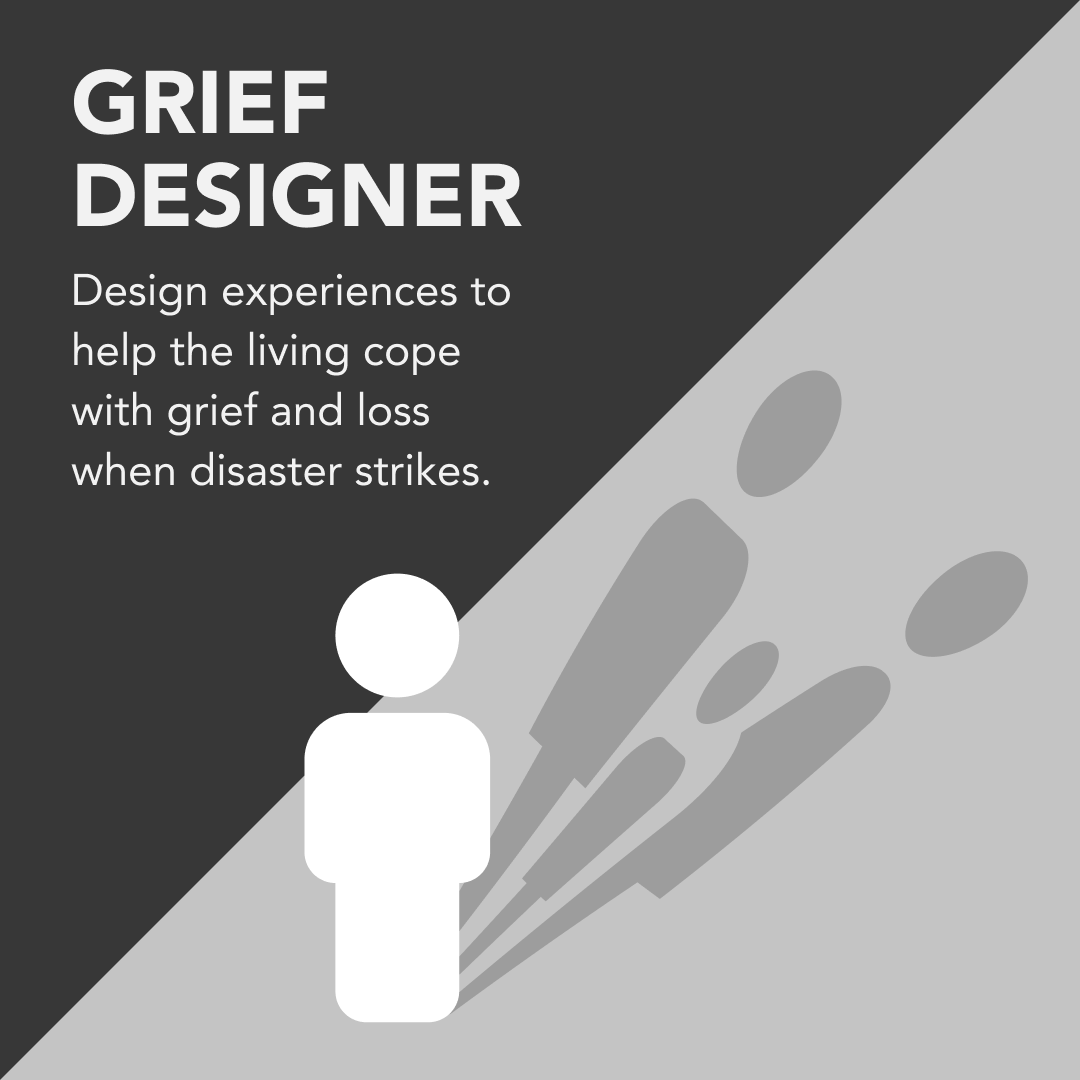
About the Job
Join the Grief unit of the government’s Disaster Response Taskforce to help the population develop emotional resilience in times of crisis. The unit oversees the important work of helping citizens manage grief so that they can continue to live productive lives. The Grief Designer will be an important member of the team, helping to design mass funeral processions, social services, and other experiences to help citizens continue with life while honouring their loved ones.
Responsibilities
- Design mass funeral processions to help the living cope with grief and loss when disaster strikes.
- Conduct research to understand the various beliefs of the population in order to honour each community when the state needs to conduct mass burials.
- Help people archive the memories of their recently deceased in virtual monuments.
- Partner social workers to nurture communities of support amongst those grieving the loss of their loved ones.
Job 6: Adaptive Fashion Designer
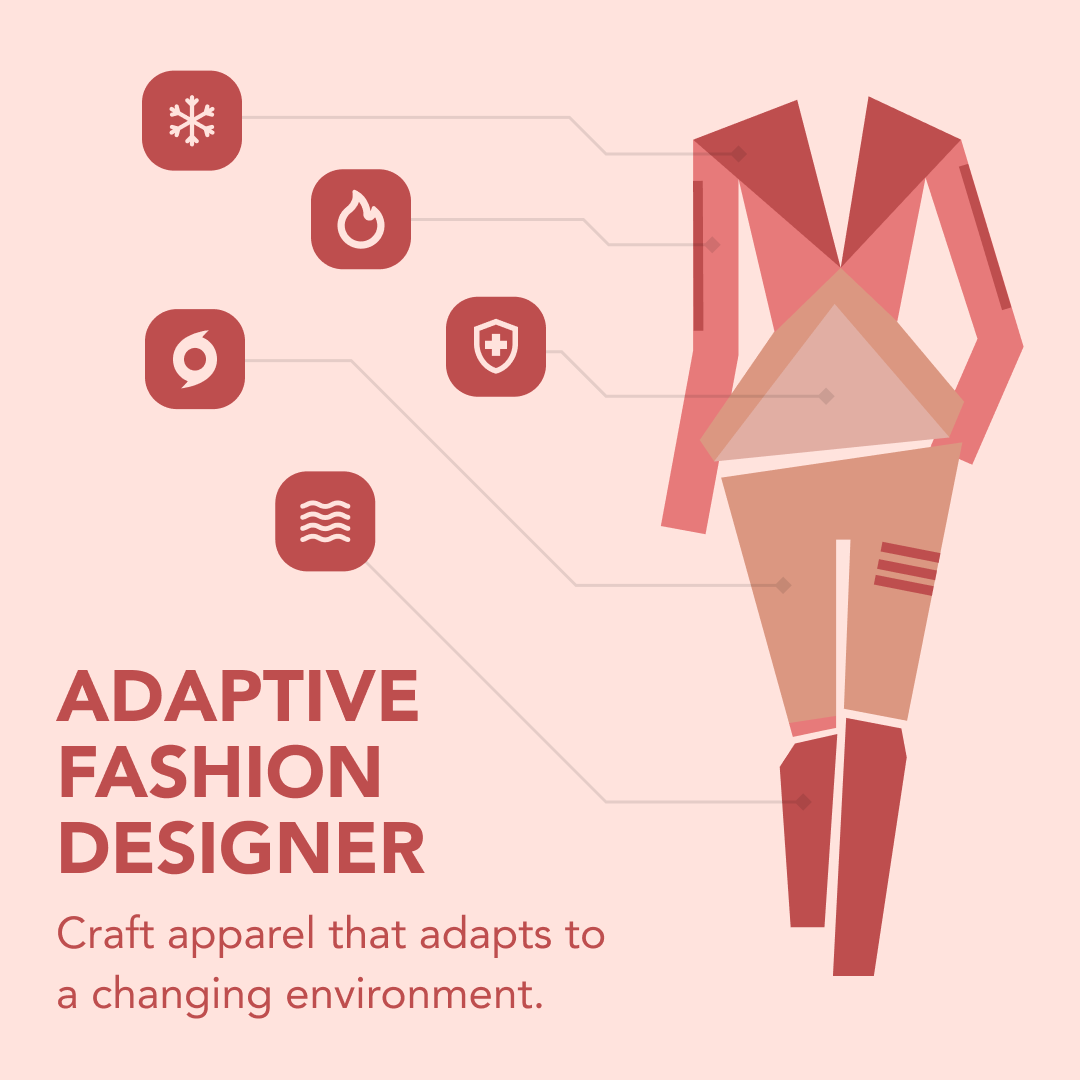
About the Job
Join the world’s leading adaptive fashion brand to create men’s and women’s apparel that truly integrates form and function. Our apparel are beautifully crafted pieces that adapt to changing temperatures and weather conditions, as well as boasts safety features that saves lives in the event of an emergency. We are looking for a designer to help conceptualise, prototype and develop apparel for the different environmental needs of our various market regions. This designer should be skilled in integrating different materials together in a cohesive product that keeps its wearer safe and comfortable.
Responsibilities
- Conduct research to understand the unique environmental needs of each market region.
- Conceptualise and sketch designs for various types of adaptive apparel and how they enable a comfortable life in increasingly hostile environments.
- Experiment with different materials and production methods for a sustainable supply chain of adaptive apparel.
- Prototype how the latest in safety equipment and technology could be implemented in adaptive fashion.
These job ads are neither predictions nor suggestions, but explorations to help myself reflect on my own career and what possible products or services I would like to design in the future. I hope that by sharing them they may also inspire or provoke thought for you!
Damien

